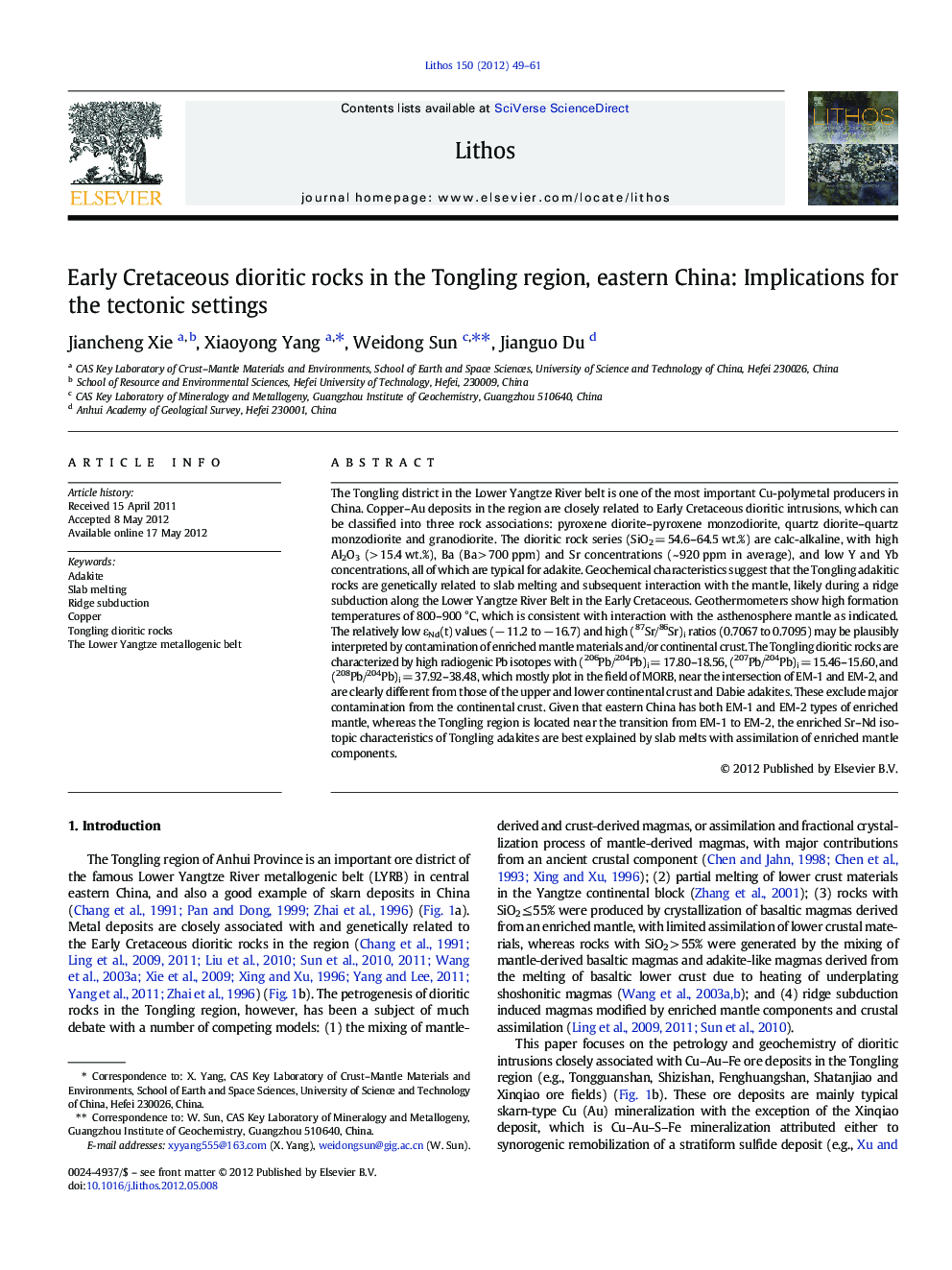| کد مقاله | کد نشریه | سال انتشار | مقاله انگلیسی | نسخه تمام متن |
|---|---|---|---|---|
| 4716488 | 1638703 | 2012 | 13 صفحه PDF | دانلود رایگان |

The Tongling district in the Lower Yangtze River belt is one of the most important Cu-polymetal producers in China. Copper–Au deposits in the region are closely related to Early Cretaceous dioritic intrusions, which can be classified into three rock associations: pyroxene diorite–pyroxene monzodiorite, quartz diorite–quartz monzodiorite and granodiorite. The dioritic rock series (SiO2 = 54.6–64.5 wt.%) are calc-alkaline, with high Al2O3 (> 15.4 wt.%), Ba (Ba > 700 ppm) and Sr concentrations (~ 920 ppm in average), and low Y and Yb concentrations, all of which are typical for adakite. Geochemical characteristics suggest that the Tongling adakitic rocks are genetically related to slab melting and subsequent interaction with the mantle, likely during a ridge subduction along the Lower Yangtze River Belt in the Early Cretaceous. Geothermometers show high formation temperatures of 800–900 °C, which is consistent with interaction with the asthenosphere mantle as indicated. The relatively low εNd(t) values (− 11.2 to − 16.7) and high (87Sr/86Sr)i ratios (0.7067 to 0.7095) may be plausibly interpreted by contamination of enriched mantle materials and/or continental crust. The Tongling dioritic rocks are characterized by high radiogenic Pb isotopes with (206Pb/204Pb)i = 17.80–18.56, (207Pb/204Pb)i = 15.46–15.60, and (208Pb/204Pb)i = 37.92–38.48, which mostly plot in the field of MORB, near the intersection of EM-1 and EM-2, and are clearly different from those of the upper and lower continental crust and Dabie adakites. These exclude major contamination from the continental crust. Given that eastern China has both EM-1 and EM-2 types of enriched mantle, whereas the Tongling region is located near the transition from EM-1 to EM-2, the enriched Sr–Nd isotopic characteristics of Tongling adakites are best explained by slab melts with assimilation of enriched mantle components.
► The Lower Yangtze River Belt is one of the most important metallogenic belts in China.
► It is famous for typical skarn deposits.
► Tonling is the most important Cu deposit district in the region, with a mining history of more than 3000 years.
► The formation of these deposits is closely associated with adakitic rocks, the formation of which is still in debate.
Journal: Lithos - Volume 150, 1 October 2012, Pages 49–61